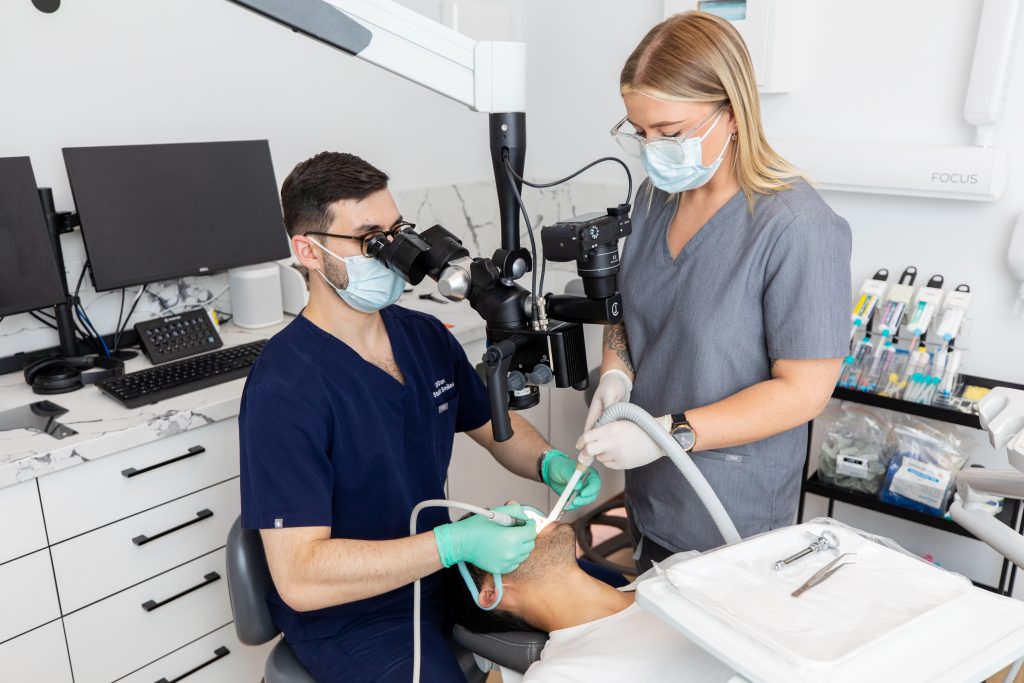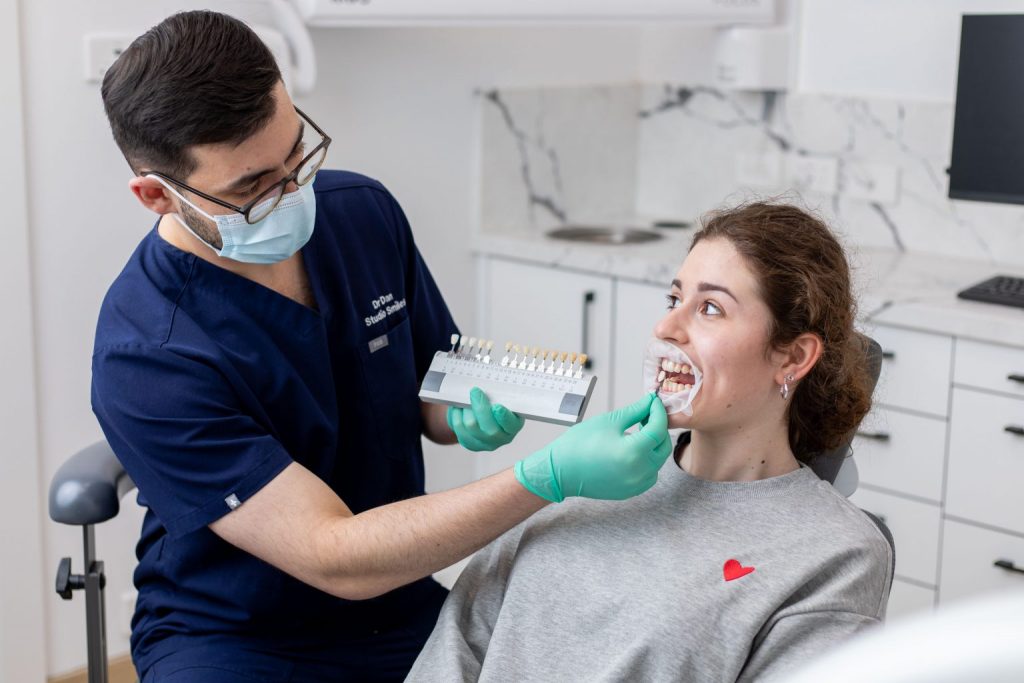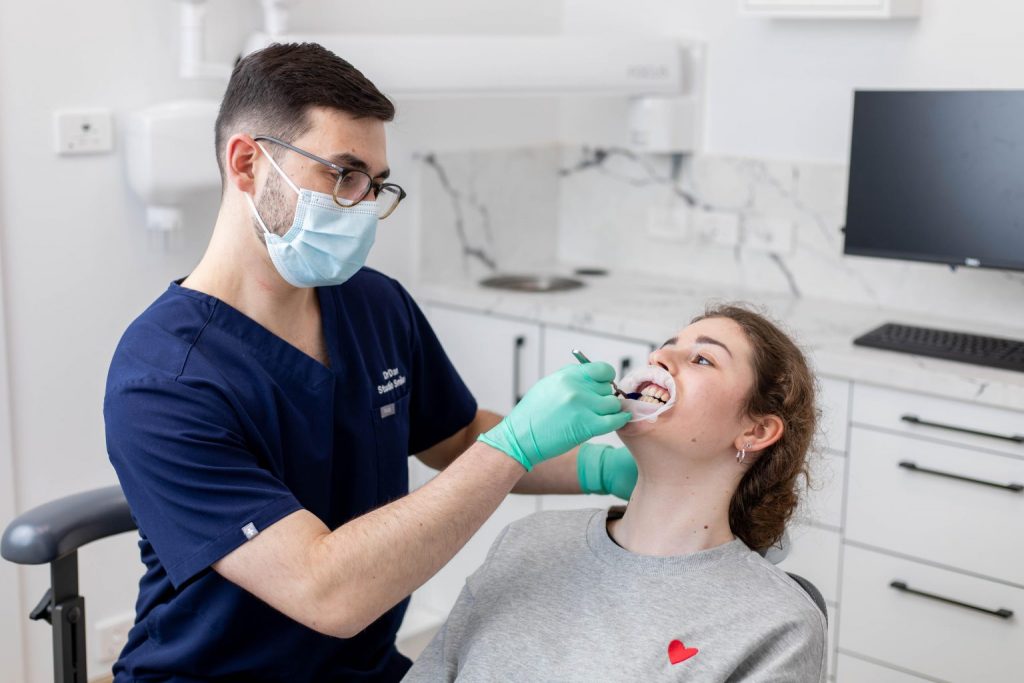What is Restorative Dentistry?
Restorative dentistry is the branch of dentistry that deals with the restoration and replacement of missing teeth and damaged teeth. It encompasses an excellent range of dental procedures, from fillings and crowns to all on 4 implants and bridges.
Restorative dentistry can help improve your smile, oral health, and overall quality of life. If you have missing or damaged teeth, it’s vital to seek out the help of a qualified restorative dentist. They can help you restore your smile to its former glory.
When Do You Need Dental Restoration?
Dental restoration might be necessary to restore the function and health of missing, damaged, or weakened teeth. These are the most common reasons that a general dentist might recommend dental restoration:
Damaged tooth structure
A cracked tooth can’t heal on its own because tooth enamel doesn’t have a blood supply, unlike your bones. A tooth with extensive damage may have damaged tooth structure. Hence, dental restoration is used to restore the tooth’s structure. It covers damaged or weakened areas of the tooth, improving its structure. Dentists recommend various treatments to fix a damaged tooth, including crowns, inlays, and onlays.Stains and Chips
Restorative dentistry can restore your dental health. However, some restorative treatments also have cosmetic benefits. For example, dental veneers are a thin layer of tooth-coloured material bonded to the teeth’s surface. It can repair minor cracks or chips and improve the appearance of your smile.Tooth Decay
Dental fillings are the most common form of dental restoration. They help to treat enamel erosion. Tooth decay can occur when your tooth is exposed to acidic substances that can erode the hard outer layer of your tooth, called enamel. It exposes the dentin layer (softer inner layer) and can lead to a cavity. A cavity can cause pain, infection, decay and even tooth loss.Dental fillings of silver, gold, porcelain, or composite resins can treat minor damages and cavities. But crowns may be better if your teeth are severely decayed with cavities.
Missing Teeth
Teeth replacement is a common form of dental restoration. If you have one or more missing teeth, you can choose dental implants to replace them. It will restore your teeth’s functionality, improving the beauty of your smile.
Some Advanced Restorative Dentistry Procedures
Here is a list of some advanced restorative dentistry procedures with details on their benefits and downsides:
Dental implants
A dental implant is a permanent replacement for a missing tooth. It is made of titanium and is surgically placed into the jawbone. The implant fuses with the bone and acts as a tooth root. Then, a crown or other restoration is placed above the implant to look and function like a natural tooth. Dental implants are the popular option for teeth restoration due to their high success rate and durability. In addition, they give natural appeal to your teeth’s appearance. Some of the benefits you can enjoy with dental implants include:
- Dental implants have high durability and can last for a lifetime.
- They match your natural teeth in colour and appearance.
- Implants improve facial structure and prevent jawbone loss.
- They support bridges and dentures, offering them more stability and comfort.
- Implant dentistry has a high success rate.

Dental crowns
A dental crown is a restoration used to improve the appearance and function of a damaged or decayed tooth. A crown is made of porcelain, metal, or a combination. It is fitted over the entire surface of the tooth. Crowns are often used to strengthen teeth weakened by decay or fracture. They also help to support the teeth with root canal treatment. Benefits include:
- Dental crowns help to improve the appearance of discoloured, misshapen, or damaged teeth.
- They encase the weak or damaged teeth in strong material to protect them from further damage.
- Dental crowns have high durability and can last for a lifetime with proper care.

Dental bridges
A dental bridge is a restoration that can replace missing teeth. Two or more crowns anchor it on the teeth adjacent to the space where the tooth is missing, and a pontic (or artificial tooth) replaces the missing tooth.
The pontic is attached to the abutment teeth with dental cement or gold screws. Gold screws are generally more robust but also have a higher cost. Bridges are available in different materials, including alloys, porcelain, and composites.
Most bridges last for five to ten years before they need to be replaced. However, it’s essential to keep your regular dentist appointments so that your Highett dentist can check your bridge for wear and tear and repair it if necessary.The pros of dental bridges include the following:
- Dental bridges restore the natural look of your smile.
- They prevent teeth from shifting out of place.
- Bridges prevent other teeth from moving into the space left by missing teeth.
- Help to maintain the shape of your face.
- They make it easier for you to eat and speak properly.
- Can last many years with proper care.
Root canal treatment
Root canal treatment is necessary when the nerve of a tooth becomes infected. The infection can cause pain, swelling, and discolouration of the surrounding gums. In some cases, the infection may also spread to other body parts.
A root canal is a procedure that removes the infected nerve from the tooth and replaces it with an artificial one. After root canal treatment, the tooth will not be sensitive to heat or cold and will not hurt when you bite down on it.
Pros:
A root canal is an effective way to preserve a tooth that has been infected or damaged. The benefits of root canal treatment include the following:
- Root canal preserves the natural tooth.
- It eliminates pain and discomfort.
- It prevents the need for extraction and replacement with a dental implant or bridge.
- Root canal prevents infection from spreading to other teeth.
- It prevents bone loss in the jaw.
- It gives a more youthful appearance.
- It protects the tooth from infection and decay.
- It’s a quick and easy procedure that generally requires one or two dentist visits.
Dentures
Dentures are removable dental appliances that can replace missing teeth. There are generally two types of dentures – complete dentures and partial dentures. You can use full dentures if all your teeth are missing. Alternatively, you can choose partial dentures when some natural teeth remain.
Complete dentures are acrylic plastic or metal alloy and fit over the gums. They are held in place by natural suction, adhesive pastes, or powders. Partial dentures comprise a base metal framework to which replacement teeth (denture teeth) are attached. Replacement teeth may be made from plastic, porcelain, or metal alloys.Some of the benefits of dentures include:
- They can replace missing teeth and help restore your smile.
- They help keep your jawbone healthy by preventing it from shrinking.
- Dentures help you eat and speak more easily.
- They’re a cost-effective way to replace missing teeth compared to other dental treatments.
Dental Bonding
Bonding is a dental treatment procedure in which a tooth-coloured resin material is applied to the surface of a tooth and then hardened with an ultraviolet light or laser. The goal of bonding is to improve the appearance of a tooth by filling in cracks or gaps, reshaping the tooth, or correcting discolouration.
Bonding can also be used to strengthen a tooth that has been damaged by decay or fracture. It is not as strong as crowns or bridges, but it can be used to restore a small amount of lost tooth structure. Some of the benefits of bonding include:
- Dental bonding is a quick, easy procedure that can be performed in one visit.
- It is a relatively affordable option compared to other dental treatments.
- Bonding is non-invasive and does not require any preparatory work such as drilling or tooth removal.
- The results are instantaneous and can dramatically improve the appearance of your teeth.
- Bonding is a reversible treatment, so if you are unhappy with the results, it can be easily corrected.
Inlays and Onlays
Inlays and onlays are dental restoration types used to treat tooth decay or damage. They are similar to fillings but involve a more extensive procedure because the tooth is first prepared by removing a small amount of enamel so that the inlay or onlay can be fitted snugly into the tooth.
Inlays are made from gold, porcelain, or composite resin, and onlays are either made from gold, porcelain, or composite resin. They offer an alternative to traditional fillings by providing a stronger, more durable restoration that can last for many years. Some of the benefits to consider if you are looking at inlays and onlays include:
- Inlays and onlays are more robust than composite fillings because they are made of gold, porcelain, or other materials that are stronger than those used for composite fillings. It means that they are less likely to break or chip.
- They look more natural than composite fillings because they match the colour of your teeth.
- They last longer than composite fillings.
How is Advanced Restorative Dentistry Different from Cosmetic Dentistry?
Cosmetic dentistry is all about making teeth look good. It includes procedures like teeth whitening, veneers, and dental bonding. Advanced restorative dentistry, on the other hand, goes beyond just cosmetic procedures. It’s about restoring the function of teeth damaged by cavities, cracks, or other problems.
Some procedures that fall under advanced restorative dentistry include dental fillings, crowns, bridges, and dental implants. These procedures are necessary to restore damaged teeth’ function and keep them healthy. Without them, teeth can eventually become so damaged that they have to be extracted.
However, there is some overlap between the two fields of dentistry. But advanced restorative dentistry focuses more on function, while cosmetic dentistry deals primarily with improving aesthetics. Both aspects of dentistry require a high level of experience, skill, and expertise.
Significant Benefits of Restorative Dentistry
Restorative dentistry is a branch of dentistry that deals with restoring teeth damaged by decay, infection, or other problems. It is a dental specialty that involves diagnosing, treating, and rehabilitating teeth. The aim of restorative dentistry is to restore the function and appearance of teeth. In addition, it helps them to look natural.
Some benefits of restorative dentistry include the following:
- Restoration of function and appearance
- Prevention of tooth loss
- Protection of remaining teeth from further damage
- Reduces the risk of infection
- Improves oral health and overall well-being.
- Helps to prevent more serious problems down the road.
Recovery and Outlook for Restorative Dentistry
The recovery process and outlook following restorative dentistry procedures vary depending on several key factors. These factors include the extent of the dental work needed, the specific type of restorative treatment chosen, and individual variations in healing.
It’s crucial to consult with your dentist to get a personalised understanding of your recovery timeline and specific dietary restrictions. Depending on the procedure’s complexity, your dentist may prescribe medications and schedule follow-up appointments to monitor your progress.

Side Effects of Restorative Dentistry
While restorative dentistry is a safe and standard procedure, it may cause some side effects. Minor side effects can occur, such as:
- A sore jaw
- Bleeding gums
- Swelling in the mouth area
- Sore throat
- Trouble swallowing or speaking
These side effects usually last only a day or two after the surgery. However, contact your dentist if you experience any of these symptoms for more than a few days. More severe side effects are rare but can include:
- Infection around the wound site
- Damage to surrounding teeth or tissues
- Numbness in the lips or tongue
If you have any of these symptoms, please seek medical attention immediately.
How Much Does Restorative Dentistry Cost?
It depends on the specific dental work that is required. Generally, the cost of restorative dentistry will be more expensive than regular preventive care, but it is an essential investment in your oral health.
Examples of standard restorative dentistry procedures include dental fillings, crowns, and implants. The cost of each process varies depending on the materials used, procedure complexity, and the dentist’s fees.
Preventive dentistry procedures such as regular teeth cleanings and fluoride treatments are less expensive than restorative dentistry procedures, but they are still not cheap. The good news is that preventive dentistry can help reduce the need for more costly restorative dentistry procedures in the future.
However, it is essential to consult with a dentist to get an accurate estimate of the cost of your specific treatment plan. In addition, many dental insurance plans will cover a portion of the cost of restorative dentistry; check with your insurance provider to see if you are eligible for coverage.
Which Restorative Treatments Are Covered by Insurance?
Most insurance companies cover some restorative treatment.
The best way to determine if your insurance company covers restorative treatments is to contact them directly and ask. Typically, the types of restorative treatments covered by insurance include dental implants, crowns, bridges, and dentures.
However, it’s important to note that each insurance company has specific policies and procedures for covering restorative treatments. So, it’s always best to contact your insurance company directly to find out precisely what is and isn’t covered.
Final Thought
Restorative dentistry is a field of dentistry that is constantly evolving and growing. Many advancements are being made in materials and techniques, meaning there are more options than ever before for restoring teeth. As a result, patients have a greater chance of finding a restoration option that fits their individual needs and preferences.
This discipline of dentistry has come a long way in recent years. If you are considering restorative dentistry, be sure to consult with a qualified dentist to see what options are available to you.
The most basic and vital restorative for teeth is a dental sealant. Sealants are tooth-coloured plastic resin painted onto the chewing surfaces of the back teeth (molars and premolars).
The sealant forms a watertight barrier that keeps food and plaque from getting into the tiny grooves on the chewing surfaces of these teeth. It helps to prevent cavities from forming in these areas. Most people should have sealants applied as soon as their permanent molars come in (usually between 6 and 12 years old).
However, a tooth’s basic restorative needs are to remain clean, sealed, and supported.
The dentist will remove all plaque and tartar from the tooth’s surface using special instruments to clean a tooth. To seal a tooth, the dentist will place a sealant on the chewing surfaces of the back teeth, where plaque accumulates most. To support a tooth, the dentist may place a dental crown or other restoration on a tooth that has lost too much structure due to decay.
It depends on the type of restoration. If you need a filling, the dentist will remove the decayed material and replace it with a filling made from gold, porcelain, or composite resin. A crown is a cap that covers the entire tooth and is usually recommended if more than half of your tooth is damaged. It can take two to three visits to complete the procedure if you need a crown. A root canal treatment may also be necessary to repair extensive damage to the tooth. Hence, the process typically takes two visits.
Restoration procedures can last from several months to many years, but that depends on the type of restoration. For example, a filling will last about 5-10 years, a crown may last 10-15 years, and a root canal may last up to 20 years. Ultimately, how long a restoration lasts depends on how well you care for your teeth and gums.
Tooth restoration is not a permanent fix but can last many years with proper care. Cavities and other dental problems can occur at any time, so it’s essential to have regular check-ups and maintain good oral hygiene habits. Brushing your teeth twice a day, flossing once a day, and using mouthwash are all necessary for keeping your smile healthy. See your dentist every 6 months for a cleaning and exam to catch any potential problems early.
You can see a dentist. Seriously, teeth are one of the essential features of your face, and they play a significant role in your overall health, so it’s not worth risking your oral health by avoiding a dentist. In addition, a good dental plan can be affordable if you shop around, and many dentists offer payment plans to help make dental care more affordable.
The best way to find a low-cost dentist is to ask friends and family for referrals and then call around to get quotes. It’s also essential to make sure you’re comfortable with your dentist and that you feel like you can trust them with your oral health.
A restorative dentist is a dentist who specialises in restoring teeth that have been damaged by decay, infection, or injury. They use various techniques to restore the appearance and function of missing teeth. For example, they may create a dental implant out of titanium metal or fit a patient with a custom-made bridge or denture. In addition, they use different materials to fill cavities and repair cracked or broken teeth.
Moreover, restorative dentists perform root canal therapy to save a tooth that is badly decayed or infected. They may be able to provide dental braces to correct problems with the alignment of teeth.
In short, some of the standard services provided by a restorative dentist include:
- Fillings
- Root canals
- Crowns and bridges
- Dentures and partials
It depends on the person. Some people find the dental restoration process painful, while others find it relatively painless. Factors that can affect the pain include the material used for the restoration, how experienced the dentist is, and whether or not you experience any complications during or after the procedure.
However, most people find that getting dental restorations is significantly less painful than dealing with cavities or other dental problems. It can be uncomfortable, but it is not usually painful. The anaesthetic will help numb the area, and you should not feel anything during the procedure. After the restoration is complete, you may experience some discomfort or sensitivity, but this should go away within a few days. You can talk to your dentist if you have any questions or concerns.
If you need a dental restoration, it’s generally best to go ahead and get it done rather than wait until the problem worsens.




